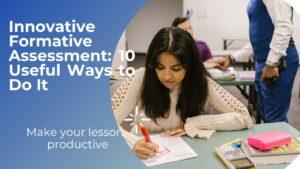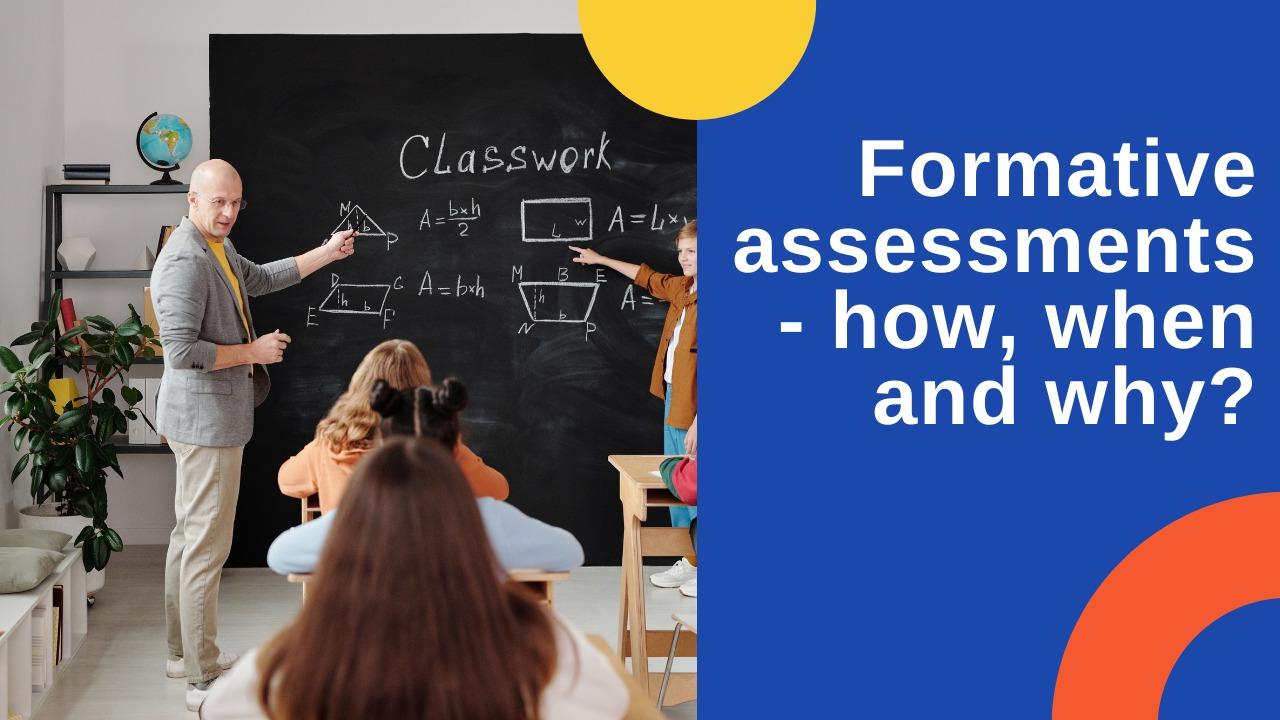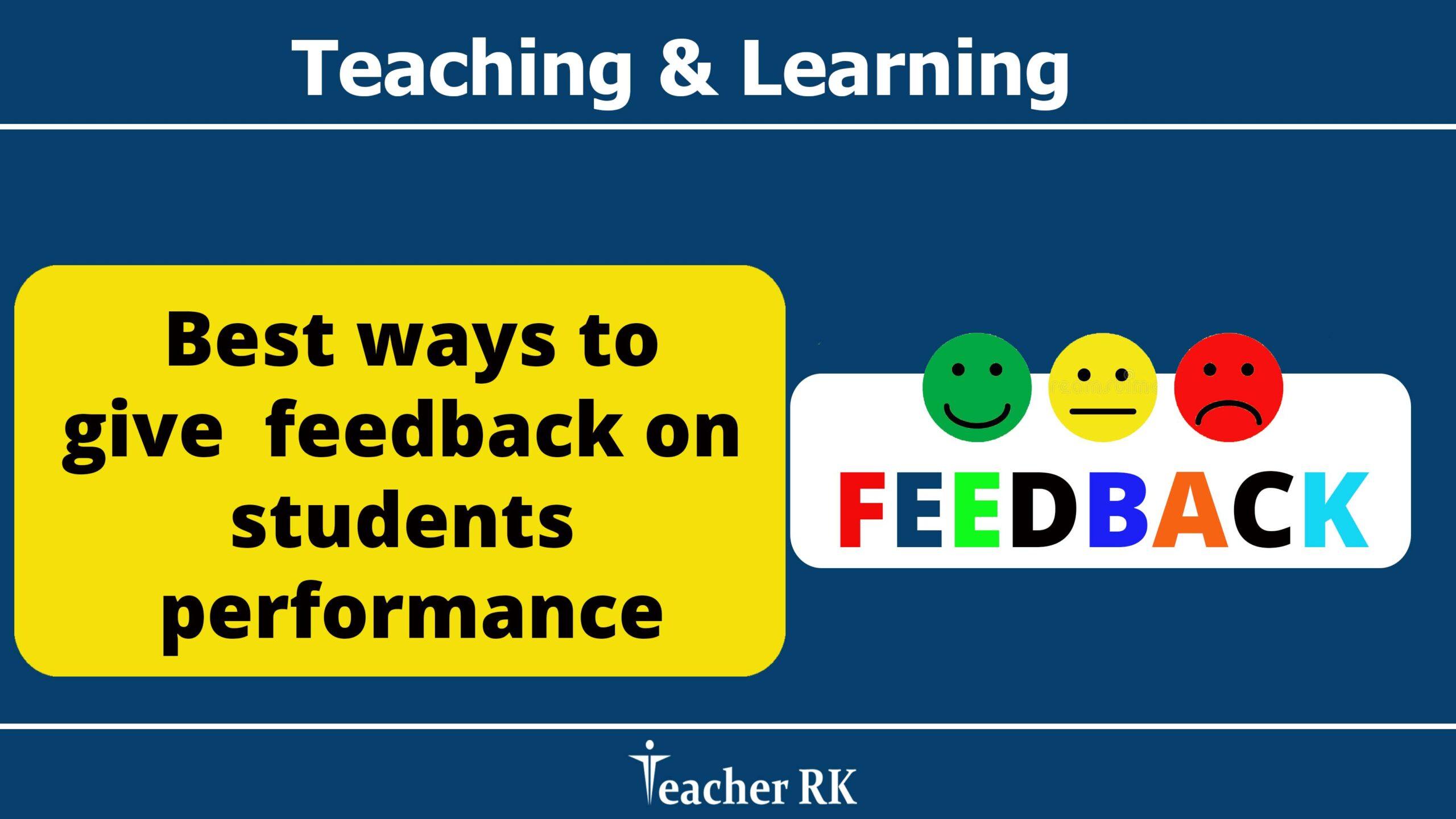What is a formative assessment?
A formative assessment is an assessment that is used to help students learn and improve. A formative assessment can be given before, during, or after a lesson to measure what students have learned so far and to see what they might need more help with. They are usually
Formative assessments are typically written by the teacher at the same time as they are teaching This means their feedback is very specific to what was taught, how it was taught, and what they want the students to do differently next time.
This form of feedback helps teachers better understand how their instruction is working for each individual student. They can then use this feedback to improve future instruction for all students who need it.
Formative assessments are different from summative assessments in that they are used to evaluate what students have learned and their progress in relation to the learning goals.
They are used for a variety of reasons, but they can be roughly categorized into two types:
- Diagnostic assessment;
- Instructional assessment.
Diagnostic assessments provide feedback on how well students understand content and reveal misconceptions. Instructional assessments show teachers if their teaching strategies work or if they need to tweak them.
Formative assessments help teachers better understand the needs of their students and help them provide specific, individualized instruction to meet these needs.
Formative assessments are used to provide feedback on student’s work. It helps the teacher find out if the student understands the concepts, if they are retaining information or if they can apply what they learned.
The ultimate goal of formative assessments is for students to improve their learning process.
Formative assessment is a type of evaluation that is used to provide feedback to the learner in order to improve their understanding of content. It often takes the form of questions at the end of a lesson. The learner can then use this feedback to determine what they are struggling with, and working on it before moving on to the next lesson.
Formative assessments are beneficial for students because it gives them an opportunity to improve their understanding of content in order to be successful when they take a final exam. They can also use the feedback they receive in order to work on misconceptions they have throughout the course.
Innovative examples of formative assessment are part of what makes up a modern classroom. They give essential information about what students know and what they don’t. These ungraded assessments are also good tools for students to use. It can help them get better at what they do.
Teachers can use them to see if more help is needed. Using new formative assessment strategies regularly and effectively eliminates surprises when you get your final grades. When teaching and learning are done together regularly, students can continually improve and become better.
Formative assessment is a way to learn from a test. This means that the feedback is used to help people learn more, in other words. Don’t think about what was done well or wrong as you think about formative assessment. Instead, it focuses on how to get better at what you’re already good at.
Innovative Formative Assessment: 10 Useful Ways to Do It

Formative assessment is a way to learn.Learning is more valuable and practical when you get feedback and make changes all the time. What follows are ten new ways for teachers to do formative assessment.
Students’ work is being looked at to see how well they did
Students’ homework, tests, and quizzes can teach you much about what they know. This is even more true if the students explain why they think the way they do. When teachers take the time to look at student work, they learn about:
- A student’s knowledge, attitudes, and skills about a subject at the moment.
- Powers and weaknesses, as well as learning styles
- Need for more, or extra, help
This method lets teachers change how they teach in the future to be more effective.
Round Robin Charts
This is a way to see how healthy groups understand each other by passing charts back and forth. It starts with a chart and some markers for each group of 4 or 5. An open-ended question is asked, and the group writes down what they think the answer should be They can also talk about what they know about a subject they learned in class. They give the chart to someone else when their group is done. As soon as every group has worked on every chart, the course talks about their answers together.
Strategic Questioning
People, small groups, or the whole class can use questioning strategies. When teachers use effective formative assessment strategies, they ask students to answer questions like why and how. It takes a lot of thought for students to answer higher-order questions. They can help the teacher figure out how much the students know.
3-Way Summaries
The idea is to think differently and pay attention to small things. Students can work in groups or alone. They write three different summaries in response to a question or question about a specific subject.
- 10–15 words long
- 30–50 words long
- 75–100 words long
You can even let your students use Twitter if you want to. Chances are, you already have a lot of students who use it. They’ll be able to send messages with very few words and characters
Think-Pair-Share
This is one of the many ways teachers can use formative assessment. It is easy for them to do. The teacher asks a question during class, and the students write down what they think. Then, the students are put in pairs to talk about their answers. Teachers can move around the classroom and listen to different talks. It gives them valuable information about how well they understand things.
The 3–2–1 countdown
This is a real test of how relevant and essential learning is. They’re more likely to want to use the things they learn somehow. Afterward, give them this one. Give them cards that they can write on or say something. They have to answer three different questions:
- 3 things you didn’t know about before.
- 2 things that you didn’t expect about this subject.
- 1 something you’d like to do with what you’ve learned.
As well as that, you can ask them different kinds of questions. You can make up your ideas.
Polls in the classroom
Polls make it easy for students to give quick and correct answers. A silent survey is excellent for students who are afraid to speak up. These are also a quick way to make sure you understand what you’re doing with mobile technology. Try tools like Poll Everywhere or SurveyPlanet to see what they can do for you.
Exit/Admit Tickets
The exit ticket is a simple but very effective formative assessment tool. When students leave the classroom, they put down a piece of paper or an exit ticket card. There was a lesson today, and students wrote down what they thought the main point was. Next, they give more information about the subject. Ticket sales happen at the start of the class. Students can answer homework questions or the lesson taught the day before or discuss what they learned then.
The One-Minute Papers
Papers that take a minute to write are done most often at the end of the day. In this place, students can work alone or in groups. They must write a short answer to a question. How do teachers usually ask these kinds of things?
- The main point
- Most surprising idea
- There were no answers to the questions that were asked.
- The most challenging part of the subject
- In the next test, what question might come up from the issue?
A student’s first sign that they don’t understand the material is when they fail a quiz or test. This is the first sign that they don’t understand the material without formative assessments. If you use a new constructive assessment strategy like this, you can keep failure out of the classroom.
Creative projects can be added to your home
Students can do many different things to show that they know what they’re talking about. These quick projects help them use the higher levels of Bloom’s Taxonomy more often. If these are small and simple, they don’t have to be big and complex. They can take a day, a half-day, or even just an hour to do. Here are some ideas for quick projects:
- Create a poster or collage that shows the subject matter.
- Record a rehearsed skit or podcast talking about the things that were covered.
- Build a diorama about the subject and write a story about it.
- Let the students make their flashcards to test each other with them when they play games together.
- Keynote presentations made by students on the subject of the show
How are the formative assessments different from and summative assessments?
Summative assessments are used to measure what has been learned or mastered. They are used to determine whether a student has reached the learning goal for a course, module, or lesson. Formative assessments are used to identify gaps in learning. They help teachers understand what students do and don’t know so that they can adjust instruction accordingly.
Formative assessment allows teachers to adjust their teaching in order to adapt and change according to what students do and don’t know so that they can eventually master the task at hand with increased efficacy and less time spent on unproductive tasks such as practicing skills that they already know how to do well or struggling with skills that they have not yet mastered
Conclusions
Formatives are an important part of a student’s learning process. They help educators to see what a student has learned and what they need to learn next. Formative assessments help teachers in assessing their students’ abilities and making informed decisions about their teaching practices.
This means that, when a student is struggling with a topic, the teacher can individualize instruction to meet the needs of the struggling student. Formative assessments also allow teachers to monitor student progress and see what areas they need to focus more on. Finally, formative assessments allow teachers to identify whether or not their instruction is effective.










